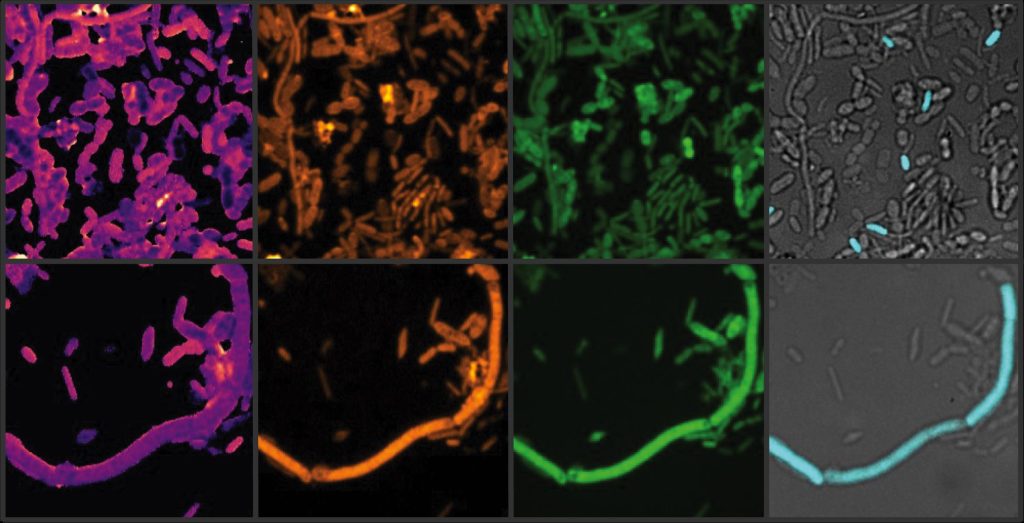
A new study reveals that entacapone, a drug used to treat Parkinson’s disease, significantly disrupts the gut microbiome by inducing iron deficiency.
Researchers used advanced imaging and molecular techniques to show that the drug inhibits beneficial microbes while promoting the growth of E. coli, which thrives in iron-starved conditions.
Parkinson’s Drug Alters Gut Microbiome
A new study has revealed that entacapone, a widely prescribed drug for Parkinson’s disease, can significantly disrupt the gut microbiome by causing iron deficiency. Conducted by researchers from the University of Vienna, in collaboration with the University of Southampton, Aalborg University, and Boston University, the study was published in Nature Microbiology. It sheds light on how human-targeted drugs can unintentionally alter the microbial communities that play a crucial role in health.
While it is well known that antibiotics can disrupt gut bacteria, recent research shows that many other medications—especially those used to treat neurological disorders—can also have a major impact. Although these drugs are designed to target specific organs, they can unintentionally disturb the balance of gut microbes, potentially leading to health issues. Until now, most studies on these drug-microbiome interactions have relied on patient data affected by multiple variables or experiments using isolated bacteria, which fail to reflect the complexity of the human gut microbiome.
A Novel Study Design to Investigate Drug-Bug Interactions
Using a novel experimental approach, the international team studied the effects of two drugs—entacapone and loxapine, a medication for schizophrenia—on fecal samples from healthy human donors. They incubated the samples with therapeutic concentrations of these drugs, and then analyzed the impact on the microbial communities using advanced molecular and imaging techniques, including heavy water labeling combined with Stimulated Raman Spectroscopy (SRS). The team discovered that loxapine and even more so entacapone severely inhibited many microbiome members, while E. coli dramatically expanded in the presence of entacapone.
“The results were even more striking when we examined microbial activity, rather than just their abundance,” explained Fatima Pereira, lead author of the study and former Postdoctoral researcher at the University of Vienna. “The heavy water-SRS method allowed us to observe the subtle yet significant changes in the gut microbiome, which are often missed in traditional abundance-based measurements.”
Entacapone Induces Iron Starvation, Favors Pathogenic Microbes
The researchers hypothesized that entacapone might interfere with iron availability in the gut, a crucial resource for many microbes. Their experiments confirmed that adding iron to fecal samples containing entacapone counteracted the drug’s microbiome-altering effects. Further investigation revealed that E. coli, which thrived under these conditions, carried a highly efficient iron-uptake system (enterobactin siderophore). This system allowed the bacteria to overcome iron starvation and proliferate, even in the presence of the drug.
“By showing that entacapone induces iron deficiency, we have uncovered a new mechanism of drug-induced gut dysbiosis, in which the drug selects for E. coli and other potentially pathogenic microbes well adapted to iron limiting conditions,” said Michael Wagner, scientific director of the Excellence Cluster and vice-head of the Centre for Microbiology and Environmental Systems Science (CeMESS) at the University of Vienna.
Wider Implications for Drug-Microbiome Interactions
This discovery has broader implications for understanding how other human-targeted drugs might affect the gut microbiome. Several drugs, including entacapone, contain metal-binding catechol groups, suggesting that this mechanism could be a more common pathway for drug-induced microbiome alterations.
The findings also present an opportunity to mitigate the side effects of drugs like entacapone. By ensuring sufficient iron availability to the large intestine, it may be possible to reduce dysbiosis and the gastrointestinal issues that often accompany Parkinson’s disease treatment.
“The next step is to explore how we can modify drug treatments to better support the gut microbiome,” said Wagner. “We are looking at strategies to selectively deliver iron to the large intestine, where it can benefit the microbiome without interfering with drug absorption in the small intestine.”
Reference: “The Parkinson’s disease drug entacapone disrupts gut microbiome homeostasis via iron sequestration” by Fátima C. Pereira, Xiaowei Ge, Jannie M. Kristensen, Rasmus H. Kirkegaard, Klara Maritsch, Dávid Szamosvári, Stefanie Imminger, David Seki, Juwairiyah B. Shazzad, Yifan Zhu, Marie Decorte, Bela Hausmann, David Berry, Kenneth Wasmund, Arno Schintlmeister, Thomas Böttcher, Ji-Xin Cheng and Michael Wagner, 21 November 2024, Nature Microbiology.
DOI: 10.1038/s41564-024-01853-0
This study was conducted as part of the FWF-funded Cluster of Excellence “Microbiomes drive Planetary Health,” a collaborative research initiative including eight leading Austrian Research Institutions.








